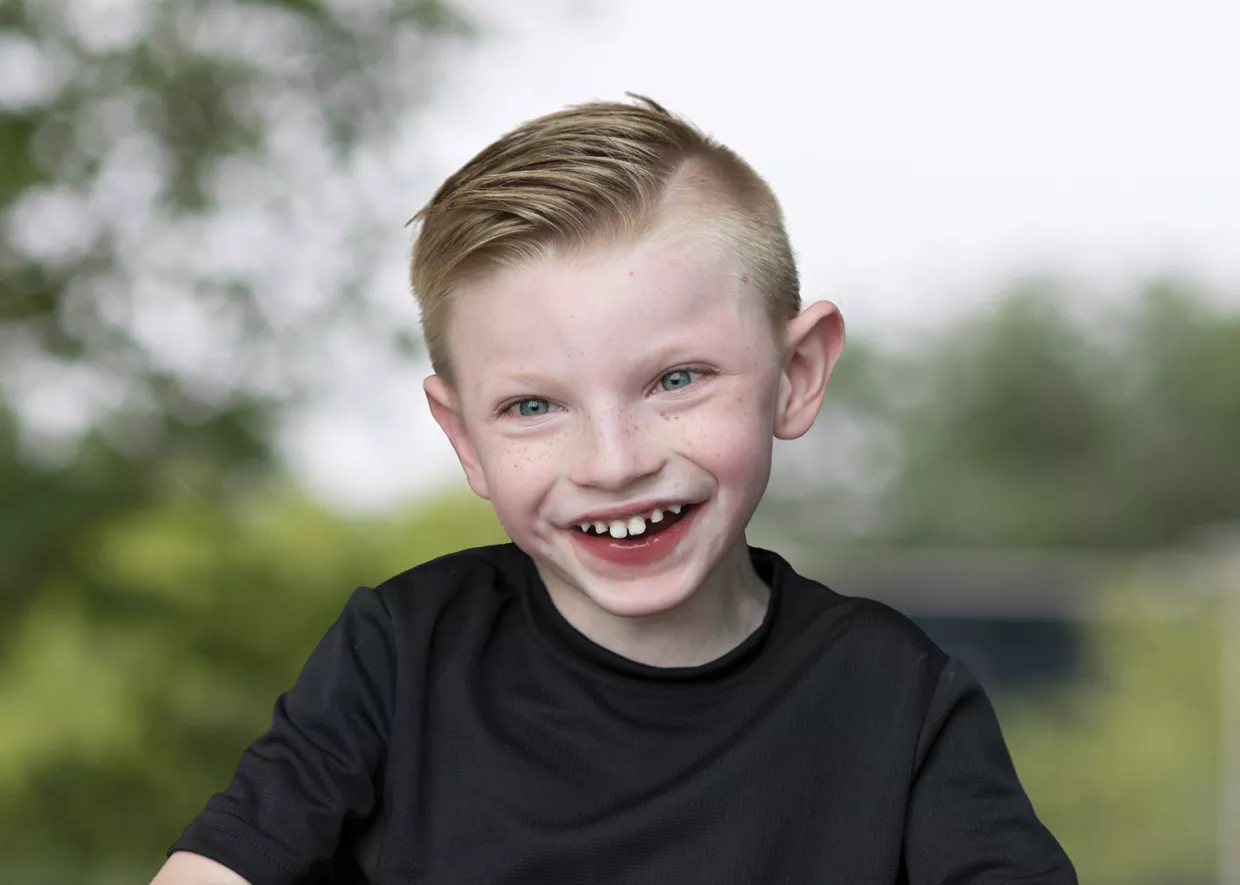Cien Currie

Cien Currie was not meeting developmental milestones in his first few months of life. One evening, he had a seizure, and his parents took him immediately to a Des Moines hospital.
“They were giving him seizure medicines, and seizure medicines, and seizure medicines, and nothing was stopping it,” says his dad, Jacob. “One day, they gave him a little too much.”
“All the machines started going off, and he stopped breathing,” remembers Cien’s mom, Kayle. “My dad and my brother-in-law had to carry me out of the room, I was so distraught. I remember thinking, ‘Am I going to lose this child?’”
After several weeks, when their local hospital still could not determine a cause for his seizures, Cien was transported by helicopter to University of Iowa Stead Family Children’s Hospital. By the time Jacob and Kayle arrived two hours later, pediatric neurologists had diagnosed Cien with agenesis of corpus callosum (ACC), a rare birth defect in which the middle of the brain does not fully form.
“The whole pediatric neurology team was waiting for us to walk in the room. They told us exactly what was going on, this is what they're going to do, and this is how we're going to treat him from here on out,” Jacob remembers. “It blew my mind how quick they knew what they were doing.”
“Cien doesn't have as many nerve endings [in his brain] to transfer information,” Jacob says. “His brain was starting to misfire and causing the seizures.”
Cien’s care team developed a plan, including using a steroid medication that drastically reduced his seizures.
“He went from hundreds of seizures a day to two, and then a few days after that, he was down to none,” Kayle recalls.
ACC is very rare and affects each person with the disease differently. “ACC affects your eating. It affects your vision. It affects everyday things – just simple things like learning a word,” Kayle explains. “Cien is wheelchair-bound, and cannot say words completely.”
When his seizures returned a year later, pediatric neurologists developed a new plan and put him on a special high-fat, low-carbohydrate ketogenic diet. He had a gastrostomy tube, or G-tube, inserted through his abdomen to deliver the formula directly to his stomach. He has now been seizure-free for two years.
“He's already gained about 30 pounds, which is amazing,” Jacob says. “It ended up probably saving his life, because he was getting what his body needed.”
Another surgery addressed his scoliosis, an abnormal curvature of the spine.
“ACC affects your muscles, so his back started to curve a little bit. It got to the point where he was really hunched over,” Kayle says. “It was affecting his organs.”
“He is doing great now that he has had both those surgeries,” she adds. “He's learned how to sit up. He can walk in his walker a couple steps, which is huge for us. He’s like a whole new kid.”
Today, Cien loves school and is known for his big smile. Both parents credit UI Stead Family Children’s Hospital.
“There’s no handbook for having a child with special needs,” says Kayle. “Each person—his neurologist, dietician, orthopedic surgeon, everybody—makes sure that we’re on the path that we need to be.”
“The quality of life they're able to give my son means the absolute world to me and my family,” Jacob adds. “They literally saved his life. If it wasn't for this place I wouldn't have the son that I have today.”